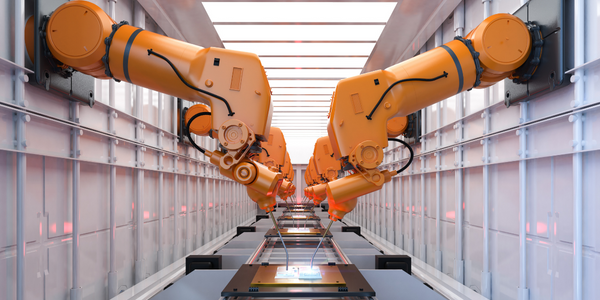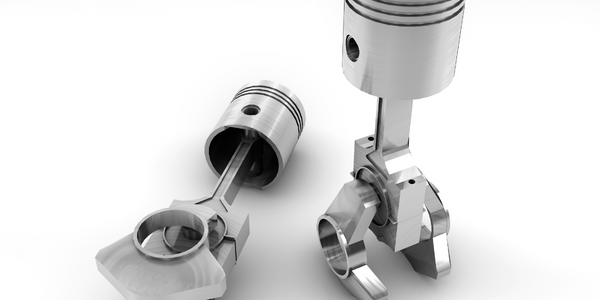Manufacturing System Automation

Manufacturing system automation integrates software and machinery so that manufacturing processes are run autonomously through computer programming. The goal of manufacturing system automation is to minimize the amount of human assistance needed in the manufacturing process. These systems provide constant feedback loops and adjust controlling parameteres in response to feedback from PLCs and Smart Sensors installed on machinery. Sensors are commonly embedded in new equipment or can be installed on legacy equipment. Automation has been achieved by various means including mechanical, hydraulic, pneumatic, electrical, electronic devices and computers, usually in combination. The benefit of automation includes a reduction of costs related to labor, electricity, water, gas, and scrap, as well as improvements to quality, accuracy, and precision. Manufacturing system automation can also reduce changeovertimes, thereby enabling small batch size production and mass customization.
- Automotive
- Equipment & Machinery
- Discrete Manufacturing
- Product Development
- Quality Assurance
The global Smart Manufacturing Market is set for rapid growth and is expected to reach around USD 479.01 billion by 2023.
Source: Zion Market Research
How do automated manufacturing systems provide business value?
● Safer for Employees
● Increased Productivity (24/7 runtime)
● Improved Product Quality
● Higher Yields
● More Accurate Data Collection
Not only do automated industrial systems increase production capacity, but the quality of that production is improved, along with greater safety for the employees operating the equipment. These systems can also be configured to provide more accurate data to optimize weak points and greatly decrease product defects due to human error.
What are the benefits of MIcrogrids?
Provides power quality, reliability, and security for end users and operators of the grid
Enhances the integration of distributed and renewable energy sources
Cost competitive and efficient
Enables smart grid technology integration
Locally controlled power quality
Minimize carbon footprint and greenhouse gas emissions by maximizing clean local energy generation
Increased customer (end-user) participation
Increased Productivity: Automation enables businesses to achieve higher levels of productivity by streamlining production workflows, reducing cycle times, and minimizing downtime. By automating repetitive tasks, businesses can optimize resource utilization and improve overall efficiency.
Cost Savings: Automation helps businesses reduce labor costs, minimize material waste, and lower operational expenses associated with manual production processes. Additionally, automation can lead to long-term cost savings through improved quality control, reduced rework, and increased throughput.
What are the latest trends in manufacturing technology?
New manufacturing technologies are continually emerging. Some of the biggest trends in recent years include:
- 3D printing: enabling the creation of almost any component using metal, plastic and other materials, reducing lead time and streamlining the design-to-production process
- Cloud services: enabling virtual sharing of data and services from any location quickly and efficiently
- The Internet of Things (IoT): transforming not just the consumer market, but the maintenance and upkeep of electronic devices used in manufacturing processes as well
- Nanotechnology: enabling things like faster computer processing, longer product lifecycles and super-precision manufacturing, and pioneering advancements in sectors such as space engineering and biotechnology
- Advanced data analytics and predictive technologies: enabling better process control, prevention of defects and quicker response times in manufacturing
- Industrial robotics: offering ways to increase productivity, improve quality and reduce cost by automating difficult or monotonous tasks.
Manufacturers: Manufacturers view automation as a strategic investment to enhance competitiveness, meet customer demands, and drive innovation. Automation enables manufacturers to scale production, improve product consistency, and adapt quickly to changing market dynamics.
Operators and Technicians: Operators and technicians benefit from automation by being able to focus on more value-added tasks, such as monitoring production processes, troubleshooting equipment issues, and performing maintenance activities. Automation also reduces the risk of human error and enhances workplace safety.
What is the biggest challenge face Manufacturing System Automation?
● Cost of Initial Investment
There’s only one real downside to implementing automated manufacturing systems, which is the initial cost. This includes the costs of machinery and implementing automated programming as well as training of employees to manage these new systems. However, ROI on this investment generally pays for itself within a few years.
Case Studies.





